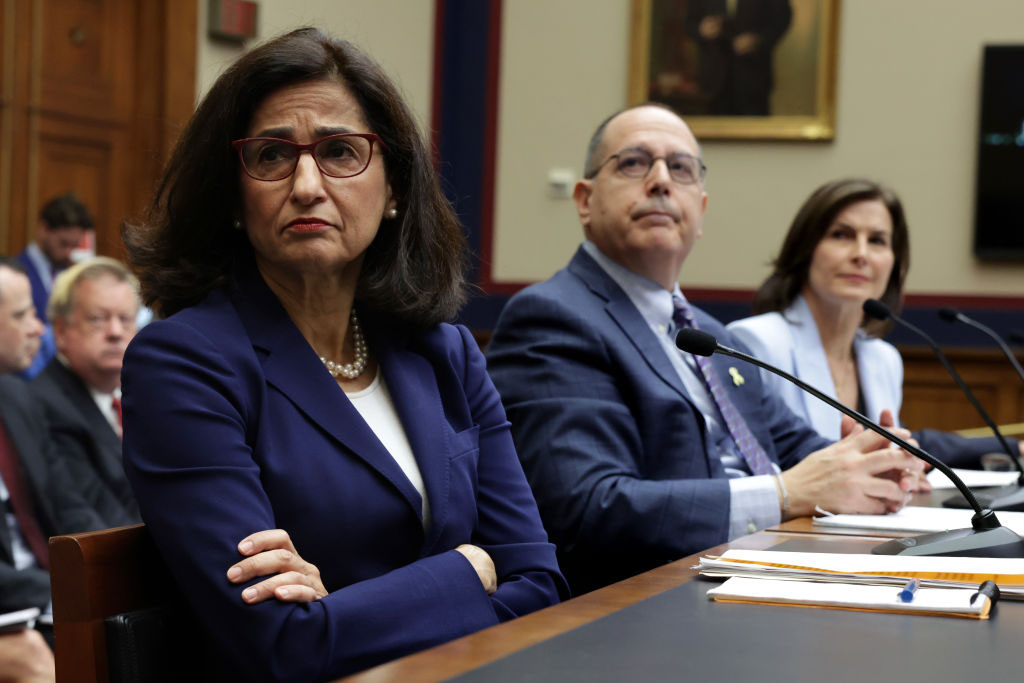The piece of art is heartbreaking: Under gray skies filled with drops of rain stands a single tombstone. Under that, the artist has written in bright red, “Death now looking for Me.”
It is the work of a fourth-grader.
By way of explanation, the student, whose real name is not identified, writes: “I live close to school where it’s not safe to play in my neighborhood. … My 6-year-old sister was shot and killed when she was playing in the front yard. I get scared sometimes and really miss her. Also, last year my uncle went to jail and I miss him too. It seems like things don’t get better around my house.”
 Pieces of art created by students in the Share and Care program. Art images courtesy of Cedars-Sinai Psychological Trauma Center’s Share and Care program
Pieces of art created by students in the Share and Care program. Art images courtesy of Cedars-Sinai Psychological Trauma Center’s Share and Care program
And yet, somehow, drawing pictures about it all — something the student has done as part of a program known as Share and Care — helps.
“In Share and Care,” the pupil writes, “I drew a picture of my sister and my uncle and other things that made me sad, but I also drew what helps me feel better when I’m having a lonely day.”
This student isn’t alone. About 27,000 local schoolchildren have been helped by Share and Care since it began 35 years ago. Based at Cedars-Sinai, its roots date back to 1981, when Suzanne Silverstein and the late Gladys Wesson-Strickland were working at the medical center’s department of psychiatry.
One day, Wesson-Strickland approached her colleague with a concern: Two of her grandsons (the children of current Los Angeles City Council President Herb Wesson and preschoolers at the time) had a schoolmate who was shot dead by his father. The boy’s mother had been shot and killed, too, and the rest of the class was having difficulty coping with the event.
“We should go to the school and work with the parents and the teachers and the kids,” Silverstein remembers saying.
And so they did.
In the early days of the program — then known as the Center for Psychological Trauma — Silverstein and other counselors worked only with children who had experienced trauma related to violence. That changed after the 1994 Northridge earthquake, which had an official death toll of 57 and injured more than 8,700. Silverstein was asked to put together a program to help school children in the Valley cope with the aftereffects of the quake.
It was from there that the program began to diversify in the needs it addressed. By 1996, the eight-week art therapy program had expanded to 12 weeks and was dubbed “Share and Care” by some students at Canterbury Avenue Elementary School in Arleta. Today, the program helps young people deal with trauma related to violence, grief, bullying, anger management, divorce, homelessness, foster care and the incarceration of family members.
But why use art as a form of therapy?
“Kids don’t always understand their feelings,” explained Silverstein, the program’s founding director. “Some kids, it’s really hard for them to talk. But they all know how to draw. So it’s a different way to communicate with people. They can then look at what they draw and talk about it.”
For example, counselors from the program visited an elementary school after 9/11 and asked them what their thoughts were on the event. One student drew the image of a boy standing next to a building, both at the same height.
“I wish I was a giant,” the boy who drew the image had said, “so I could squash bin Laden.”
“Art is a natural expression for elementary students,” said Krishna Smith, the principal of Loyola Village Elementary School. “It allows them to tell their stories, and the therapy helps teach them coping skills at a young age.”
The art itself becomes reflections of the person in therapy — child or adult — so they can better understand their experiences, according to Madoka Urhausen, a supervisor and coordinator of school-based mental health programs at The Guidance Center in Long Beach. Similar to Share and Care, The Guidance Center has art therapy programs in 20 schools in the Long Beach Unified School District.
“The use of art therapy is more empowering,” Urhausen told the Journal. “People come to the ‘aha’ moment on their own instead of the therapist telling them what their problem is.”
Through Share and Care, run today under the auspices of Cedars-Sinai’s Psychological Trauma Center, a high school student named Janelle said she was able to find other students in a situation similar to hers — her mother and brother are in jail — and who identify with her feelings. She went from failing her classes to wanting to do well in school and become an artist.
“Now, I have shared my story in group. … I thank my group for believing in me,” Janelle wrote. “I have friends and my counselor believes in me. My homeroom teacher said I am blossoming into an amazing young woman.”
Emma Kaplan, 12, has been through the program twice — once to help her deal with the death of her uncle, and the second time because she was fighting a lot with her brother. Both times, drawing her feelings and then talking about them helped her deal with them better, she told the Journal. And even though she still sometimes fights with her brother, it’s not as bad.
Teachers refer students in need to 13 program counselors who are stationed at the schools during the academic year. Therapy sessions take place in small groups during school hours, twice a week for 12 weeks. At the end of the 12 weeks, students can avail themselves of additional services if it is determined that the students need more time to heal.
Although the Share and Care program may be geared toward elementary and middle school children (and sometimes high schoolers), the Psychological Trauma Center also has programs for parents and teachers.
Silverstein recommends that parents speak to their children about a traumatic event as it happens because “you know your own kids and you can talk to them and explain it in a way that they could understand.”
The teacher training program focuses on helping teachers identify students in need of counseling and helpful techniques that can be used in classrooms to help students deal with traumatic events.
Funded entirely by Cedars-Sinai — officials declined to say how much is spent on the program — the programs offered by the Psychological Trauma Center are free to schools within the Los Angeles Unified School District. The Share and Care program is currently active in 28 schools, with 33 schools on the waiting list.
The center celebrated its 35th anniversary May 30 with a dinner and exhibition of 33 pieces of art done by students who have gone through the program over the years. The youngest was by a 4-year-old.
“People are much more impacted by violence now than they were ever impacted before,” Silverstein told the Journal. “If you don’t start with the kids and you don’t start early on, you’ll never make a dent in what’s going on. So I’m hoping the little bit that we’re doing here will start to prevent that.”





















 More news and opinions than at a Shabbat dinner, right in your inbox.
More news and opinions than at a Shabbat dinner, right in your inbox.